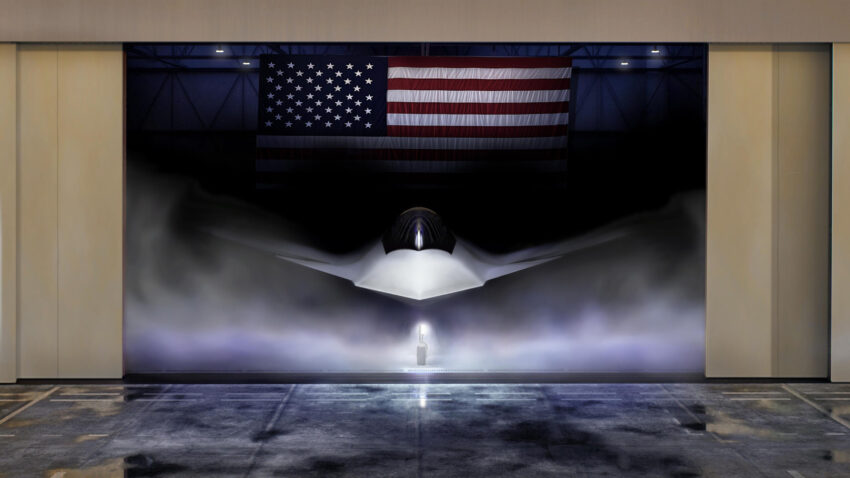Shown is a graphical artist rendering of the Next Generation Air Dominance (NGAD) Platform. The rendering highlights the Air Force’s sixth generation fighter, the F-47. The NGAD Platform will bring lethal, next-generation technologies to ensure air superiority for the Joint Force in any conflict. (US Air Force graphic)
WASHINGTON — Congressional efforts to move the Navy’s sixth-generation fighter jet program forward will cause a delay in the Air Force’s F-47 program, the White House said this week, making official what many in defense circles have been whispering: The administration is prioritizing the Air Force’s next jet over the Navy’s capability.
In response to the House Appropriations defense subcommittee’s budget markup, the White House on Tuesday released a formal Statement of Administration Policy [PDF], which lays out concerns with HAC-D’s numbers. It specifically calls out two acquisition topics where the committee added in money over what the Pentagon’s budget request called for.
The first is with F/A-XX, the Navy’s sixth-gen fighter. House appropriators added in $972 million to continue development on the jet, which the Navy wants to replace its legacy F/A-18 fighters. Northrop Grumman and Boeing are both competing for the F/A-XX effort.
The “Administration strongly supports reevaluating the F/A-XX program due to industrial base concerns of two sixth-generation programs occurring simultaneously,” the White House wrote. “Awarding the F/A-XX contract as written is likely to delay the higher-priority F-47 program, with low likelihood of improving the timeline to field a Navy sixth generation fighter.”
Interestingly, the Navy included a request for $1.4 billion to support F/A-XX in its annual Unfunded Priority List, a required document sent to Congress that serves as a wish list from the service for what got left out of its official budget request — seemingly a sign Navy brass are at odds with the White House on the future of their air assets.
“This additional funding will enable Navy to award the 6th Generation Strike Fighter contract to industry,” the Navy wrote in its letter to lawmakers. “Navy’s 6th Generation Strike Fighter aircraft is a critical component of both the future Carrier Strike Group (CSG)” and the “air wing of the future.”
Boeing in March beat out Lockheed Martin for the F-47 contract, following the latter’s exit from the F/A-XX competition, a development first reported by Breaking Defense. Boeing Defense CEO Steve Parker has emphasized the industrial base can “absolutely” take on the F-47 and F/A-XX. The Air Force expects the F-47 to fly before the end of President Donald Trump’s term.
The second issue raised by the White House in the letter is around funding for the Boeing E-7 Wedgetail, which the Pentagon has decided to cancel in favor of space-based surveillance and early warning options. House appropriators would budget $500 million to keep the Wedgetail program alive, while including $1.2 billion to acquire four Northrop Grumman E-2D Advanced Hawkeye early warning aircraft that the Pentagon says will be used as a stopgap measure until sufficient orbital capabilities can be fielded.
“The Administration views those aircraft as cost-effective risk mitigations related to its decision to cancel the E-7 program,” the White House letter says regarding the E-2D funding. Still, the administration held fast to its decision to cancel Wedgetail, “due to the platform’s significant cost — $2.6 billion for the first two planes; survivability concerns in a peer conflict; and DOD’s significant investments in space-based targeting and beyond line-of-sight communications, which would subsume a large portion of the E-7 mission.”
Click this link for the original source of this article.
Author: Aaron Mehta and Michael Marrow
This content is courtesy of, and owned and copyrighted by, https://breakingdefense.com and its author. This content is made available by use of the public RSS feed offered by the host site and is used for educational purposes only. If you are the author or represent the host site and would like this content removed now and in the future, please contact USSANews.com using the email address in the Contact page found in the website menu.








